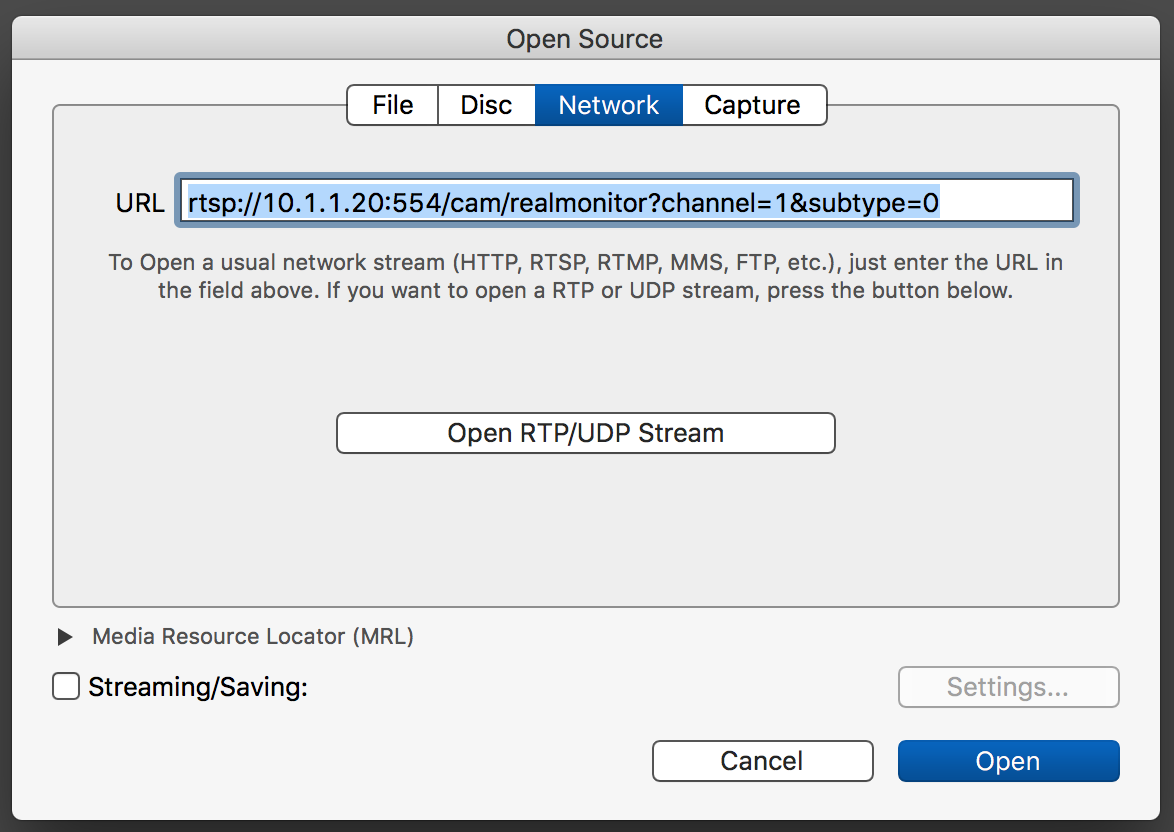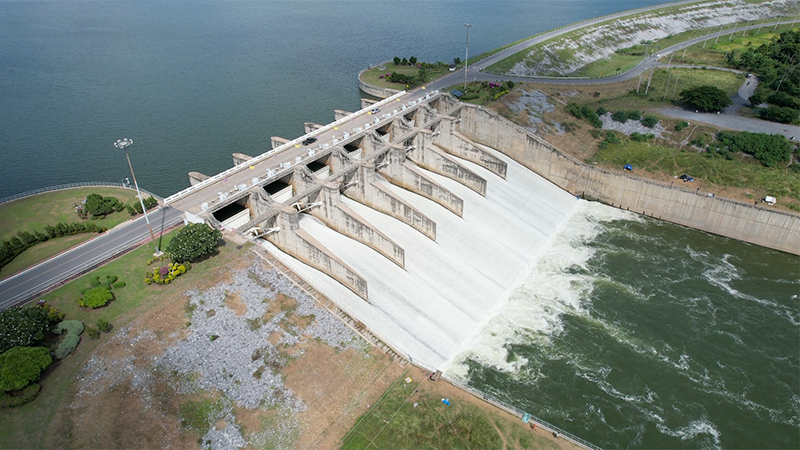You can find free RTSP stream URLs for testing at websites like IPCamLive and RTSP Stream Test. These sites offer live feeds for developers.
RTSP (Real-Time Streaming Protocol) streams are essential tools for developers working on video applications. Testing RTSP streams helps ensure your software can handle live video data efficiently. Various websites provide free RTSP stream URLs, allowing developers to test their applications without needing a physical camera.
IPCamLive and RTSP Stream Test are popular platforms where you can access these streams. By using these resources, you can simulate real-world conditions and troubleshoot any issues that arise. Testing with free RTSP streams saves time and resources, making it easier to develop reliable video applications.

Introduction To Rtsp
RTSP stands for Real-Time Streaming Protocol. It is a network control protocol. RTSP is used in entertainment and communications systems. It controls streaming media servers.
What Is Rtsp?
RTSP is a protocol used for streaming media. It helps to control audio and video streams. RTSP allows users to play, pause, and stop the stream. It works over TCP or UDP.
Here is a simple RTSP request example:
OPTIONS rtsp://example.com/media.mp4 RTSP/1.0
Common Uses Of Rtsp
RTSP is used in many applications. These include:
- Surveillance systems
- Live streaming
- Video conferencing
- IP cameras
- Video on demand
Surveillance systems use RTSP to stream live video. Live streaming platforms use RTSP for real-time broadcasts. Video conferencing tools use RTSP to transmit live audio and video.
IP cameras stream video using RTSP. Video on demand services use RTSP to deliver content.
Rtsp Stream Urls For Testing
RTSP stream URLs are used for testing. Here are some examples:
| URL | Description |
|---|---|
| rtsp://example.com/test1 | Test stream 1 |
| rtsp://example.com/test2 | Test stream 2 |
Benefits Of Rtsp Streams
RTSP (Real-Time Streaming Protocol) streams offer many advantages. They are ideal for live video streaming. RTSP streams are used in various applications. These include security cameras, live events, and online education.
Real-time Viewing
RTSP streams allow real-time viewing. You can watch events as they happen. This is crucial for surveillance and live broadcasts. Real-time viewing helps in quick decision-making. It also enhances user engagement.
Low Latency
One key benefit is low latency. Low latency means minimal delay. This makes RTSP streams reliable. Low latency is essential for live events. It ensures the audience gets up-to-date information.
Scalability
RTSP streams are highly scalable. You can easily add more viewers. This is perfect for growing audiences. Scalability ensures that the stream quality remains high. It also supports various devices and platforms.
Free Rtsp Stream Sources
Are you searching for free RTSP stream sources for testing? There are several reliable options. These sources provide a variety of streams for different purposes. Explore public cameras, demo streams from manufacturers, and educational institutions.
Public Cameras
Public cameras offer a great resource for free RTSP streams. Cities around the world stream their public spaces. You can easily access these streams for testing.
- City Traffic Cameras: Many cities offer live traffic feeds.
- Parks and Recreation: Some parks have live streams of various locations.
- Tourist Attractions: Popular tourist spots often have live camera feeds.
These streams help in testing various scenarios and settings. They are available 24/7 and show real-time footage.
Demo Streams From Manufacturers
Several manufacturers provide demo RTSP streams. These streams showcase their camera products. You can use them to test without buying any equipment.
| Manufacturer | Stream URL |
|---|---|
| Axis Communications | rtsp://example.com/axis |
| Hikvision | rtsp://example.com/hikvision |
| Dahua | rtsp://example.com/dahua |
These demo streams show the quality and features of the cameras. They are perfect for testing your applications.
Educational Institutions
Educational institutions also provide free RTSP streams. They often stream events, lectures, and other activities. These streams are useful for various testing purposes.
- University Lectures: Some universities stream their lectures live.
- Campus Events: Events on campus are often streamed in real-time.
- Research Projects: Certain projects may offer live streams for public view.
These streams come from reliable sources and offer different testing environments. They are a great addition to your testing toolkit.
Setting Up Rtsp Streams
Setting up RTSP streams can be a bit challenging. This guide will help you understand the process. RTSP, or Real-Time Streaming Protocol, is used for streaming media. You’ll need certain tools and follow some basic steps to get started.
Necessary Tools
Before setting up RTSP streams, gather these essential tools:
- IP Camera or Software Encoder: To capture video.
- RTSP Server: To manage the stream.
- Media Player: To test the stream (e.g., VLC Media Player).
- Stable Internet Connection: For seamless streaming.
Basic Configuration Steps
Follow these steps to configure your RTSP stream:
- Connect Your Camera: Ensure the camera is connected to the network.
- Access Camera Settings: Use the camera’s IP address to access settings.
- Enable RTSP: Turn on RTSP streaming in the camera settings.
- Retrieve the RTSP URL: Find the RTSP URL from the settings (e.g.,
rtsp://).: /stream - Configure the RTSP Server: Enter the RTSP URL into your server software.
- Test the Stream: Use a media player like VLC to test the RTSP stream.
Here’s a sample RTSP URL format:
rtsp://192.168.1.100:554/streamInsert your own IP address and port number in the URL. Ensure the camera is on the same network.
Remember to keep your firmware updated. This ensures compatibility and security.
Testing Rtsp Streams
Testing RTSP streams is essential for developers and network engineers. It ensures smooth and efficient streaming. Whether you use VLC Media Player or FFmpeg, the process is straightforward. Below, we explore the steps to test RTSP streams using these tools.
Using Vlc Media Player
VLC Media Player is a popular choice for testing RTSP streams. It is free and user-friendly. Follow these steps to test RTSP streams with VLC:
- Open VLC Media Player.
- Navigate to Media > Open Network Stream.
- Enter the RTSP stream URL in the provided field.
- Click Play to start the stream.
If the stream plays smoothly, it confirms the RTSP URL is working. VLC also allows you to view stream details for further analysis.
Testing With Ffmpeg
FFmpeg is another powerful tool for testing RTSP streams. It is command-line based and highly versatile. Follow these steps:
- Install FFmpeg on your system.
- Open your command-line interface.
- Type the following command to test the stream:
ffmpeg -i rtsp://your_stream_url -f null -This command will attempt to play the stream. FFmpeg provides detailed output, helping identify any issues with the stream. It is ideal for troubleshooting and advanced testing.

Troubleshooting Common Issues
Are you facing problems with your RTSP stream URL? Don’t worry. This section covers common issues and their solutions. Let’s dive in and resolve those pesky stream problems.
Stream Not Loading
If your stream is not loading, check these common causes:
- Incorrect URL: Ensure the RTSP URL is correct.
- Firewall Settings: Your firewall might be blocking the stream.
- Network Issues: Check your internet connection stability.
- Server Down: The server hosting the stream might be offline.
Buffering And Latency Problems
Experiencing buffering or latency issues? Follow these steps to improve performance:
- Check Bandwidth: Ensure you have enough bandwidth.
- Reduce Resolution: Lower the stream resolution to reduce load.
- Update Software: Ensure your streaming software is up-to-date.
- Use Ethernet: Connect via Ethernet for a stable connection.
Below is a table summarizing the common issues and solutions:
| Issue | Solution |
|---|---|
| Stream Not Loading | Check URL, Firewall, Network, Server Status |
| Buffering | Check Bandwidth, Reduce Resolution, Update Software, Use Ethernet |
| Latency | Check Bandwidth, Reduce Resolution, Update Software, Use Ethernet |
By following these steps, you can troubleshoot and resolve most issues with your RTSP stream URL.
Advanced Rtsp Configurations
Configuring your RTSP stream can bring many benefits. You can enhance security, adjust stream quality, and customize settings for optimal performance. Let’s explore advanced RTSP configurations to maximize your streaming experience.
Authentication And Security
Securing your RTSP stream is crucial. Unauthorized access can lead to privacy breaches. Implementing authentication methods is a good practice.
- Basic Authentication: Use a username and password. This method is simple but may not be fully secure.
- Digest Authentication: More secure than basic. It uses a challenge-response mechanism.
- SSL/TLS Encryption: Encrypts the data. This ensures only authorized users can view the stream.
Below is an example of enabling basic authentication:
rtsp://username:password@your-stream-url
Remember to choose strong passwords. Regularly update them to maintain security.
Custom Stream Settings
Customizing your stream settings can improve quality and performance. Adjust parameters like resolution, bitrate, and frame rate.
| Setting | Description | Example |
|---|---|---|
| Resolution | Defines the clarity of the stream. | 1920×1080 (Full HD) |
| Bitrate | Controls the data rate of the stream. | 4000 kbps |
| Frame Rate | Number of frames per second. | 30 fps |
Use the following code snippet to set a custom resolution:
rtsp://your-stream-url?resolution=1920x1080
Balancing these settings helps achieve the best quality with available bandwidth.

Resources For Further Learning
For those interested in Free RTSP Stream URLs for testing, delving deeper is essential. This section provides valuable resources for further learning. Explore online tutorials, community forums, and official documentation to expand your knowledge.
Online Tutorials
Online tutorials are a great way to learn more about RTSP streams. Many websites offer step-by-step guides. Some popular platforms include:
- YouTube: Video guides on setting up and using RTSP streams.
- Udemy: Paid courses with in-depth explanations.
- Coursera: University-level courses on streaming protocols.
Community Forums
Community forums provide a space to ask questions and share experiences. They are invaluable for troubleshooting and tips. Here are some active forums:
- Reddit: Subreddits like r/RTSP and r/streaming.
- Stack Overflow: Many threads discussing RTSP stream issues.
- GitHub Discussions: Project-specific forums with expert advice.
Official Documentation
Official documentation is the most reliable source of information. It provides comprehensive details straight from the developers. Here are some key sources:
- VLC Media Player: Official VLC documentation on RTSP streams.
- FFmpeg: Detailed guides on using FFmpeg with RTSP.
- ONVIF: Standards and protocols for IP-based security products.
Frequently Asked Questions
What Is An Rtsp Stream Url?
An RTSP stream URL is a link used to access live video streams. It stands for Real-Time Streaming Protocol.
Where Can I Find Free Rtsp Stream Urls?
You can find free RTSP stream URLs on various online platforms. Websites like iSpy and IPCamTalk provide lists of free RTSP URLs.
How Do I Use An Rtsp Stream Url?
To use an RTSP stream URL, enter it into a compatible media player. VLC Media Player is a popular choice.
Are Rtsp Stream Urls Reliable For Testing?
RTSP stream URLs are generally reliable for testing purposes. However, availability and performance may vary.
Conclusion
Finding a reliable RTSP stream URL is essential for testing. This guide provides useful links for developers and testers. Use these URLs to ensure your streaming applications function smoothly. Always verify the stream’s quality and reliability. Happy testing, and may your projects succeed effortlessly!



